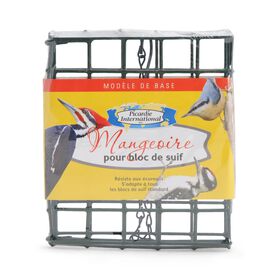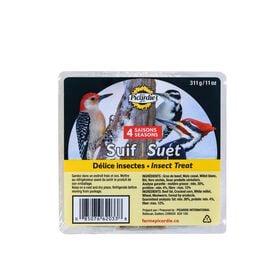When the birds come back, it’s a sure sign that spring is on the way. Their song is like a symphony that sounds the arrival of warmth and sun.
In the North, birds migrate during two periods: autumn and spring. And spring migration doesn’t just bring out the birds: ornithologists whose winter birdwatching period hasn’t stopped impressing them are likely to stick their heads out at the first chirp of a bird!
Ring-billed Gulls are usually among the first to arrive with Red-winged Blackbirds following close behind. Song sparrows can also be heard, even when there’s snow on the ground.

Why do birds migrate?
Snow is just one of the factors that chase away the birds. In fact, the cold reduces the number of available food sources or, in some cases, renders them completely inaccessible, as is the case for insects. The majority of migrations will thus occur once food sources become difficult to access.
For other birds, such as ducks, the icy habitat and its frozen water ways that prevent them from paddling and finding food, proves an inhospitable environment. The cold definitely makes winter unbearable, but it’s not the only cause of migration.
Which ones leave, and where do they go?
Most birds in Quebec migrate. Certain species, such as insectivores, see most of their numbers decline, while for other species, only some members will leave in search of warmer climes. Woodpeckers, which are also insectivores, will find other food sources during the winter. Mourning Doves and Blue Jays both visit in winter, but a portion of their population won’t migrate.

Other sedentary species such as Cardinals will stay at home in the same habitat through summer. Not only are these birds faithful to their females, they can also stay in one place for many years, provided they have a well-stocked feeder and a fertile source of food. The Great Raven, the White-breasted Nuthatch, the Pileated Woodpecker, the Rock Dove and the Domestic Sparrow, are examples of some other winter visitors.
Migrating birds will travel to warmer countries where they’re likely to find food, such as the Antilles, Mexico, and South America. Other species, such as the Blue Jay, will go to Southern Ontario or the Northern US.
Why do they return?
Great question! You’d think that once they arrive down south it would be pointless for the birds to come back to Quebec! But don’t be fooled: Canada is North America’s bird nest capital! Our temperate climate is actually ideal for migrating species. Northern habitats are highly productive and produce an abundance of insects and food. Another major plus is that predators and competition tend to be less of a concern here.
Celebrating spring
Spring is without question the best time of the year to witness a spectacle that will really blow you away! Already, we can hear the Blackbird at dawn, only too happy to be waking you up. When the warm weather returns, you’ll notice the song of the Black-capped Chickadee, the White-breasted Nuthatch’s snicker and tap-tap-tap of the Woodpecker. Buntings will gladly lose their breath pursuing a little springtime romance.
Once back home, you’ll notice the birds displaying their most beautiful colours, such as the Yellow Goldfinch who sheds its olive colour to don a beautiful coat of bright yellow offset by black streaks which only serve to highlight its distinct dazzling yellow hue.
Have a great observation!




